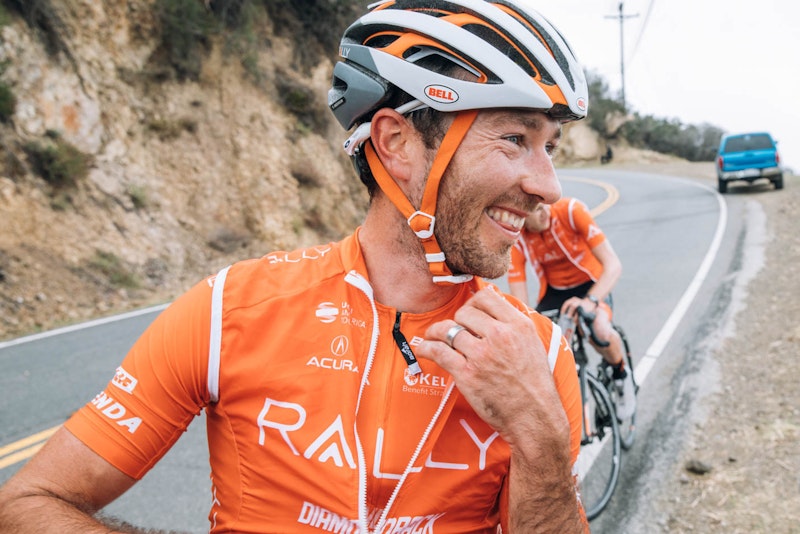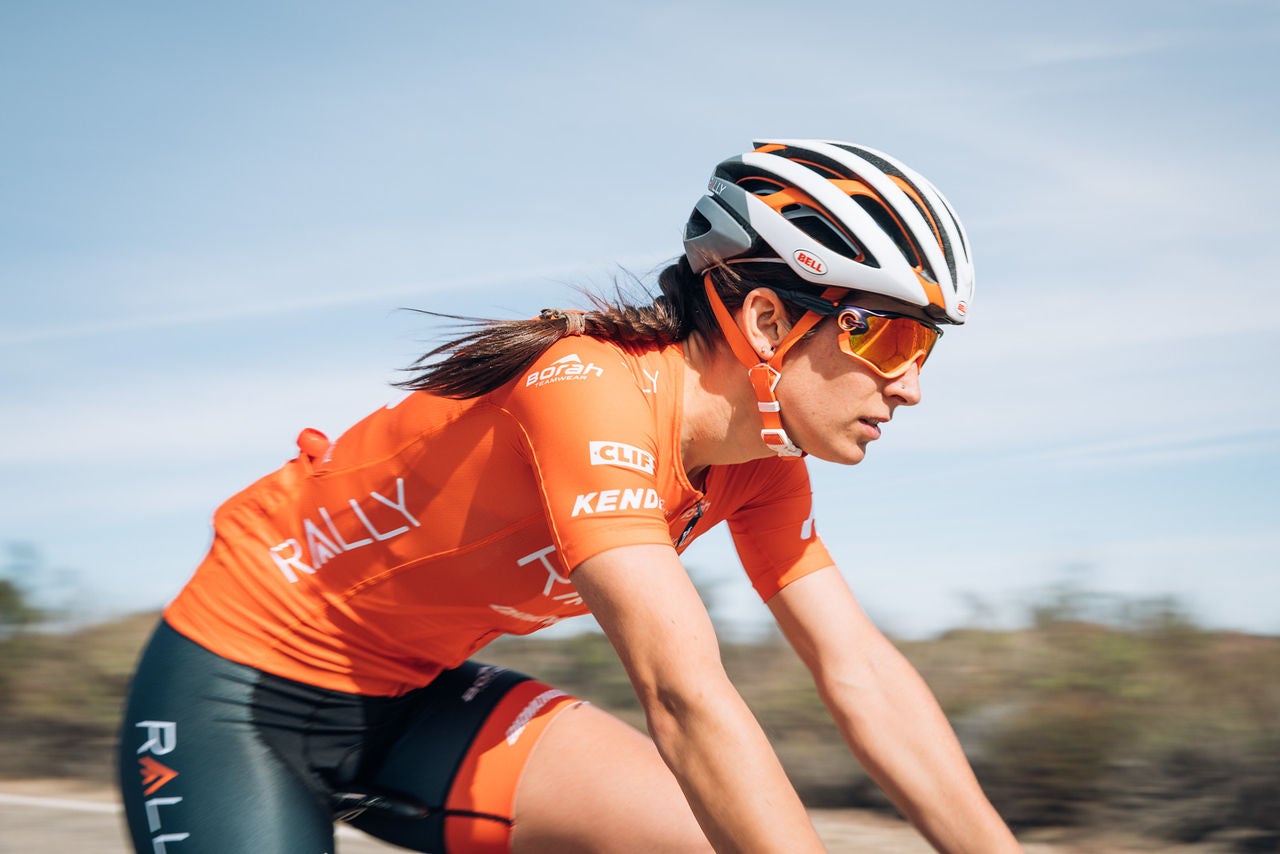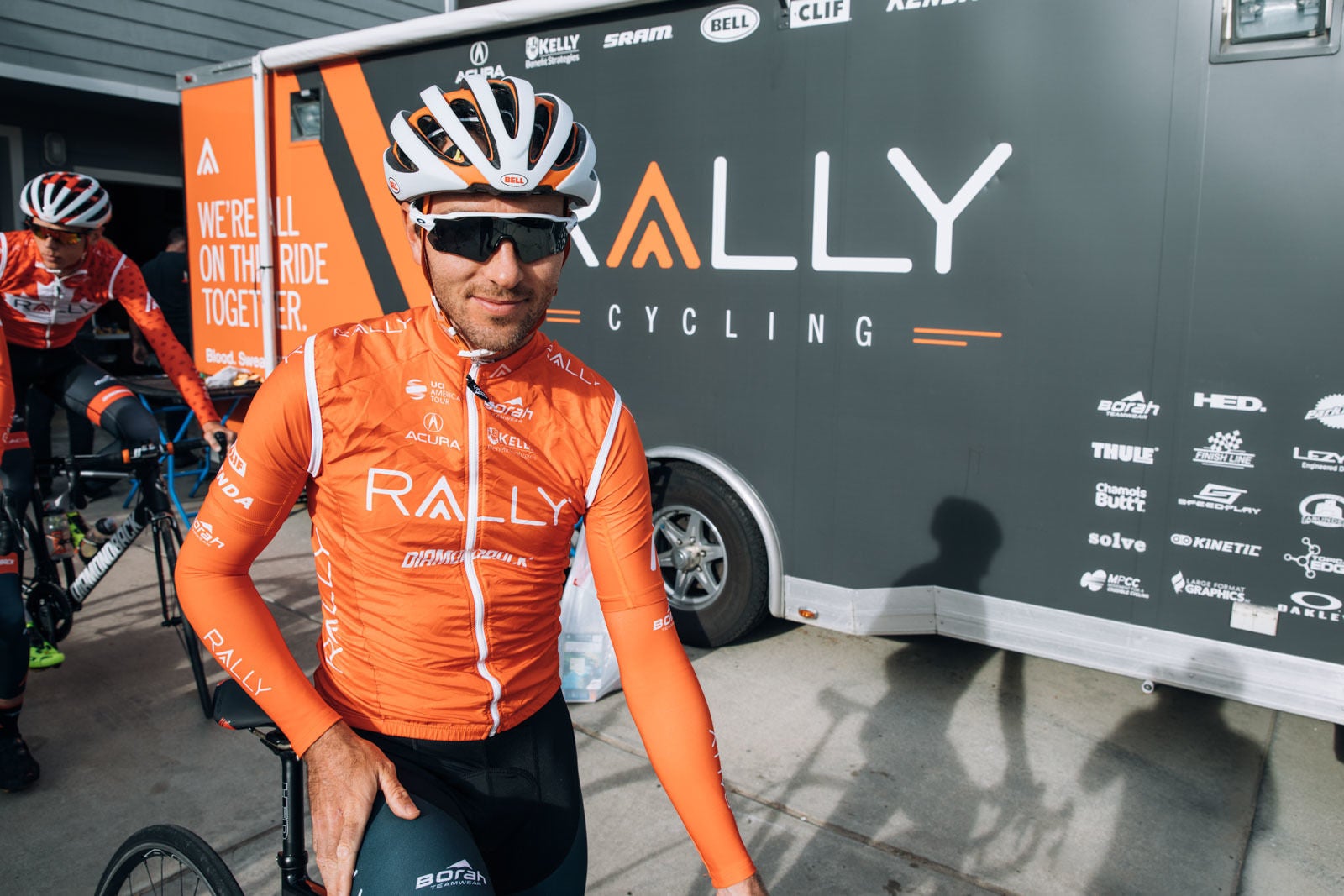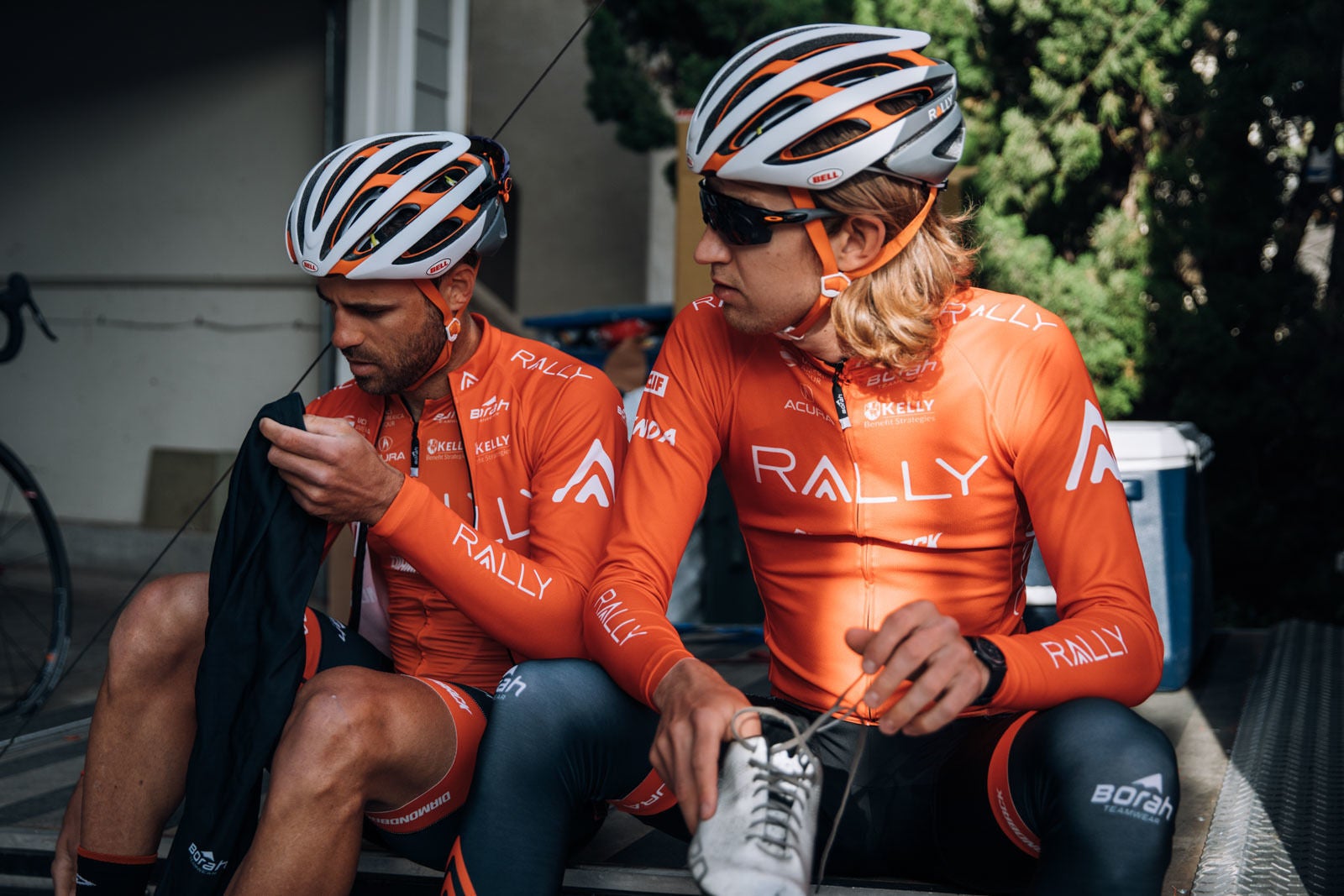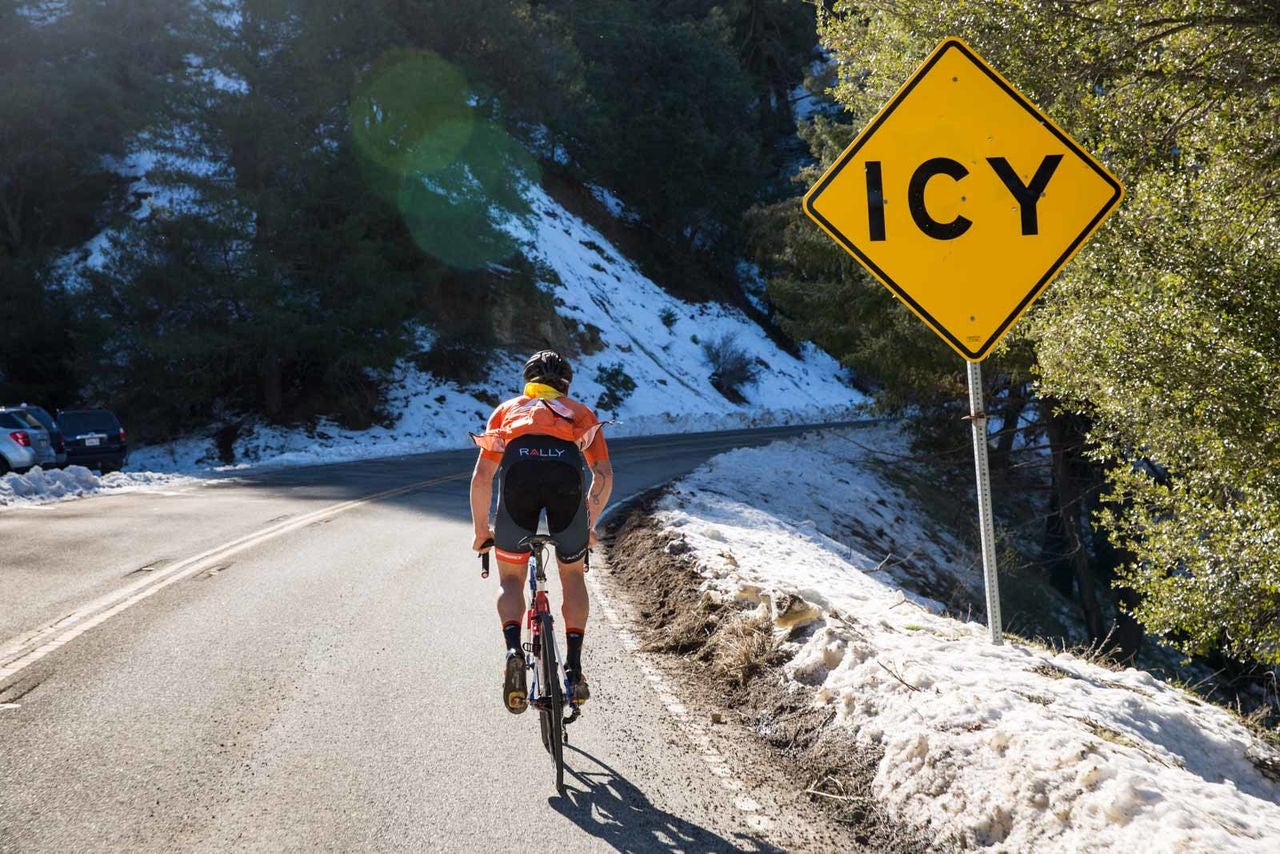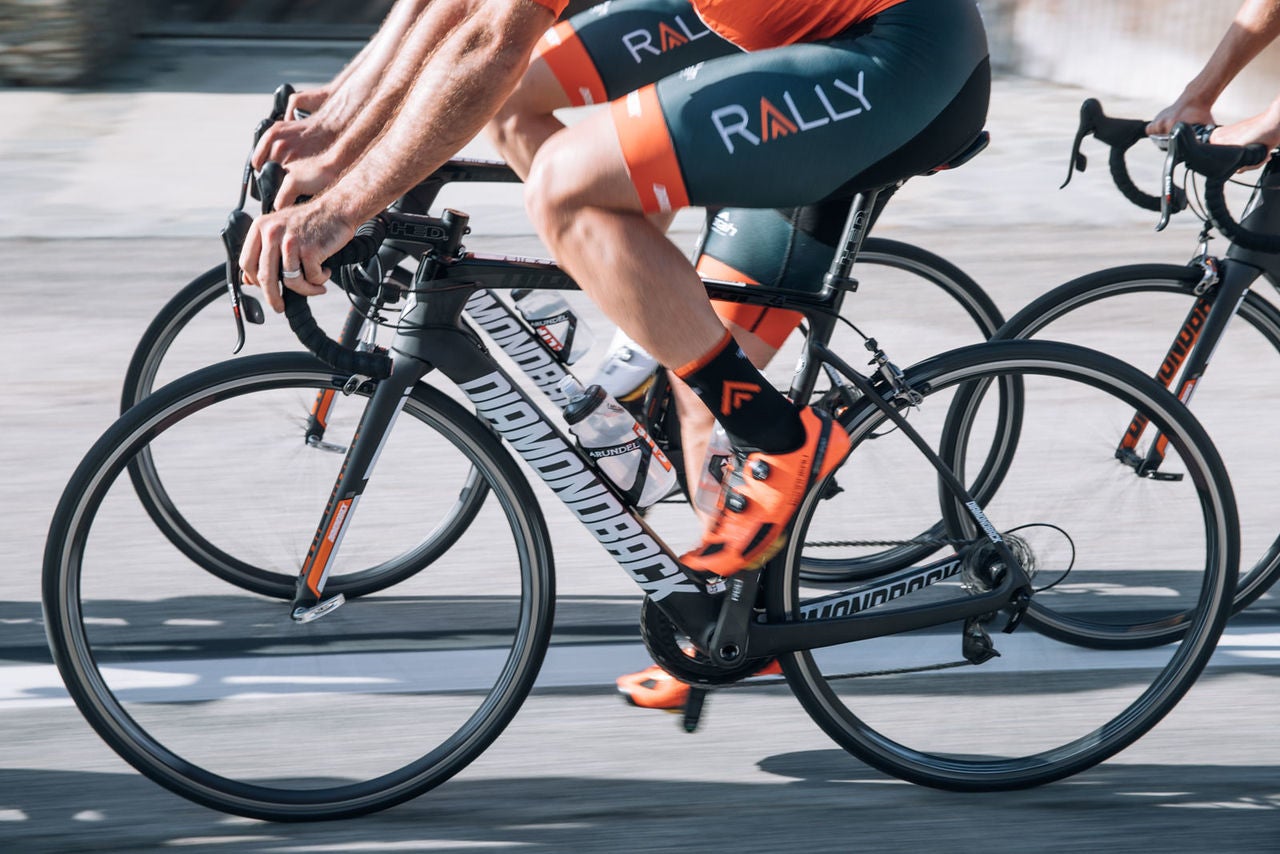Jesse Anthony and Kyle Murphy understand the importance of keeping your knees warm.
Invest in Well-Fitting Cold Weather Layers
Summer is simple: shorts and a jersey will do the trick on hot rides. Cold weather gets trickier, since adding more and more layers can make moving more difficult and actually reduce blood flow in your arms if layers are too tight or constrictive. Anderson adds a thin base layer under a long-sleeve jersey (for extra pockets) before layering his jacket.
Pro tip: Keep the heaviest layers on the outside to make movement easier, and when getting dressed, put yourself in a cycling position, bent at the hips with your hands out like you’re gripping the handlebars to ensure that nothing is pulled too tight and you still can breathe easily.
Don’t forget, as 20-year-old Canadian pro Gillian Anderson says, “Opt to dress warmer more often — you can always take layers off!”
Warm Up Any Outfit with a Buff
Still cold? Consider U23 Cyclocross National Champion and Rally Cycling racer Emma White’s favorite piece of cycling clothing: the buff. It's essentially just a cylinder of material, but a buff is one of the most versatile, climate-controlling pieces of gear that you’ll ever buy, since it can act as a neck warmer, be pushed up to create a hood, or smushed tightly to serve as a headband. It’s small enough to ball up in your pocket if the day warms up, and typically costs under $25. There’s no excuse not to add one to your wardrobe — especially if you spend a lot of time out in the cold.
Bring a Rainproof Windbreaker
Think like the Boy Scouts: Be prepared. A sunny day can turn windy or rainy, and a temperature that feels great while pedaling can quickly feel chilly if you’ve stopped to fix a flat. Thankfully, there are plenty of wind- and waterproof options for jackets small enough to stash in your jersey pocket. Carrying one of these will almost certainly come in handy sometime.

